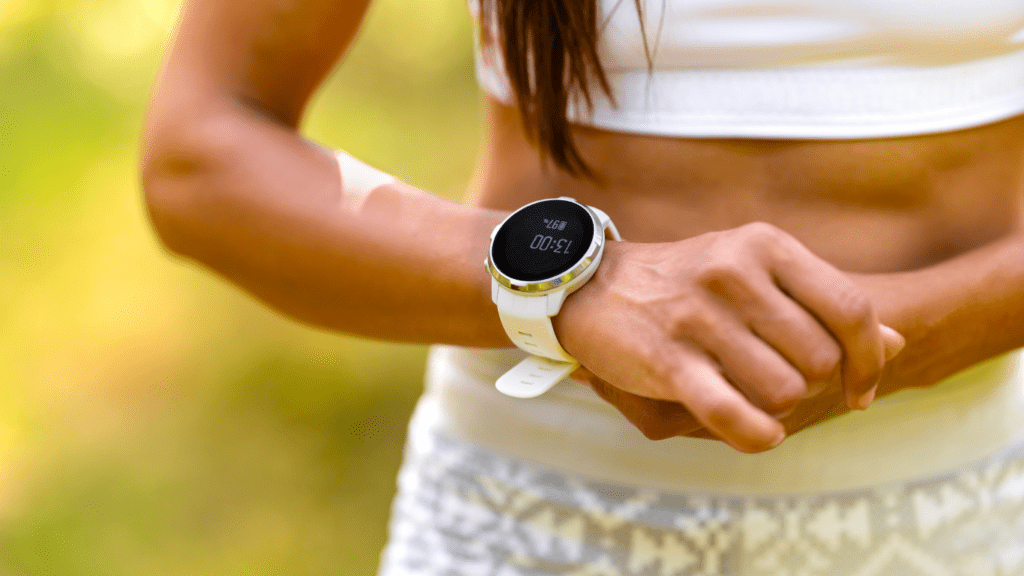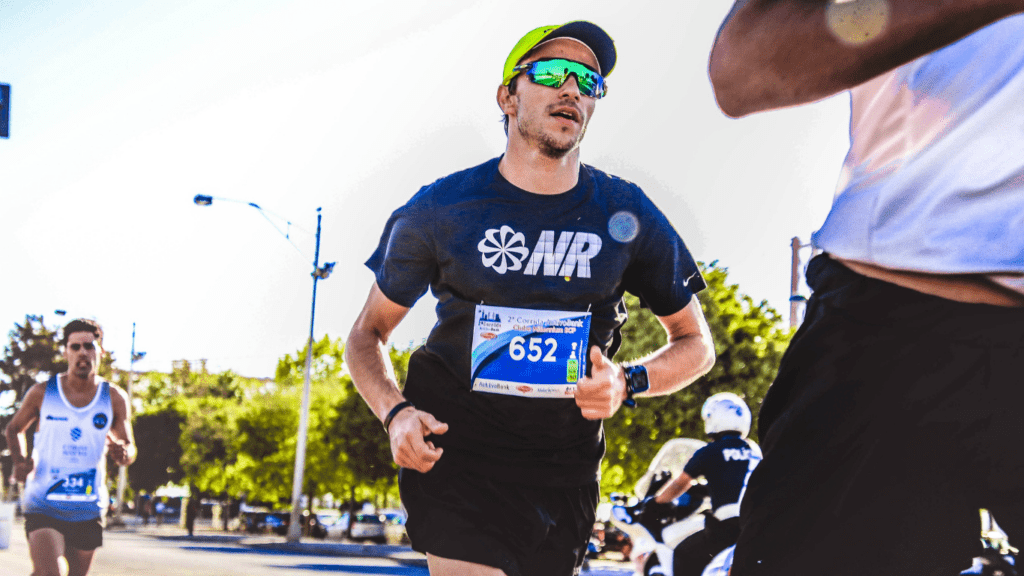Evolution of Running Technology
Running technology has seen significant advancements. Devices and apps now redefine the experience by offering real-time data and personalized insights.
From Stopwatch to Smart Devices
The shift from basic stopwatches to advanced smart devices has revolutionized running. Initially, runners relied solely on stopwatches to track time.
Smartwatches and fitness trackers now offer a plethora of features. For example, GPS functionality tracks routes while heart rate monitors measure cardiovascular effort. These devices sync with apps, providing comprehensive analytics on performance.
The Emergence of Running Apps
Running apps have become indispensable. They cater to different needs, from beginners to advanced athletes. Apps like Strava and Nike Run Club offer features such as:
- route mapping
- pace analysis
- virtual challenges
Social functionalities in these apps foster community engagement, allowing runners to share progress and compete. Personalized training plans provide tailored advice based on individual goals, making it easier to achieve specific fitness objectives.
Key Wearable Technologies for Runners
Runners now have access to a variety of wearable technologies that enhance performance and provide vital data. These devices have transformed how runners train and track their progress.
-
GPS Watches
GPS watches have become indispensable for runners. They track distance, pace, and routes using satellite technology. Brands like Garmin and Apple offer models with customizable training plans that adapt to performance levels.
-
Heart Rate Monitors
Heart rate monitors measure how hard the heart works during exercise. Chest straps and wrist-based monitors, like those from Polar and Garmin, provide real-time data, helping runners optimize training intensity.
-
Smart Insoles
Smart insoles provide detailed information on footstrike patterns and pressure distribution. Brands like NURVV offer products that help runners improve form and reduce injury risk by syncing with mobile apps.
Popular Running Apps and Their Impact
Running apps have revolutionized the sport by offering tailored training plans, fostering community connections, and promoting health and safety. They provide valuable insights that help runners of all levels improve their performance and stay motivated.
Training Apps
Training apps like Strava and Runkeeper transform how we approach running. Strava allows users to track runs with GPS, analyze performance, and compare segments against other runners.
Runkeeper offers customizable training plans for various goals, including 5K, 10K, and marathon distances. These apps analyze data on pace, distance, and elevation, helping runners optimize their training plans and reach their goals more efficiently.
Community and Motivation Apps
Community-focused apps like Nike Run Club and Zwift Running enhance the sense of camaraderie among runners. Nike Run Club offers guided runs, virtual coaching, and social sharing features to keep users motivated.
Zwift Running combines the physical and virtual worlds by allowing runners to participate in virtual races and group runs on digital courses.
These apps help create a supportive environment where runners can share achievements, interact with peers, and stay engaged in their running routines.
Health and Safety Apps
Health and safety apps like Road ID and Glympse provide crucial support for runners. Road ID stores essential medical information and emergency contacts, which first responders can access in case of an emergency.
Glympse enables runners to share real-time location with friends or family, ensuring they stay connected and safe during their runs. These apps offer peace of mind and enhance the overall safety of the running experience.
Benefits of Running Tech for Athletes

Running tech provides significant advantages for athletes. It transforms training, performance, and overall experience.
Improved Performance Tracking
Wearables offer real-time data on pace, distance, and heart rate. Devices like Garmin watches or Apple Watches collect these metrics to help runners understand their performance.
Analytical tools in apps like Strava and Runkeeper allow athletes to review data, identify patterns, and adjust training plans. Detailed insights from running metrics enable personalized adjustments.
Enhanced Safety Features
Safety features in running tech make long runs less risky. GPS tracking allows friends or family to monitor runners’ locations.
Apps like Road ID and features in Apple Watches automatically send alerts in emergencies. Advanced wearables detect irregular heart rates, preventing potential health issues during runs.
Reflective gear and built-in lights in some devices enhance visibility.
Social and Competitive Aspects
Running apps connect athletes, fostering a sense of community. Platforms like Nike Run Club and Zwift Running let users share progress and join virtual races.
Leaderboards in apps promote friendly competition, motivating runners to set new personal records. Community challenges and group runs provide encouragement and social engagement.
Potential Drawbacks of Running Tech
While running tech offers numerous benefits, some drawbacks must be considered.
Over-reliance and Data Privacy Concerns
Over-dependence on running tech can hinder self-awareness and natural intuition. Runners often focus solely on metrics, neglecting body signals and traditional running techniques.
This reliance may affect overall performance and injury responses if the device malfunctions.
Data privacy concerns also arise with wearable devices and running apps. These tools collect and store personal data such as location, biometric information, and performance metrics.
Unauthorized access to this sensitive data could lead to identity theft and privacy violations. Ensuring robust security measures and privacy settings is crucial for mitigating these risks.
Cost Implications
Running tech can be expensive. High-quality wearables from brands like Garmin and Apple often come with hefty price tags. Subscription fees for premium features on apps like Strava or Runkeeper add to these costs.
Beginners and casual runners might find these expenses prohibitive.
Maintenance and replacement costs further escalate the financial burden. Batteries, straps, and sensors need periodic upkeep or replacement, culminating in additional expenses over time.
Managing and budgeting for these costs is essential for sustained use of running tech.



